It took me years to own my bisexuality. It also took me years to come to terms with my love of horror, for similar reasons. I come from a family harbouring a congenital obsession with a certain cartoon mouse and his media empire, and so my love of all things dark and gothic was not always well understood—even after The Nightmare Before Christmas gave me an outlet. Over the years, writing became my way of dealing with my difference, my stories stashed in hidden notebooks. I have become passionate about the ways dark and brutal stories can reach out to people in the depths of trauma and show them others have been there and that there are ways to cope, and maybe even a way out. I am excited by the opportunity to tell stories that would make another person feel less alone when things seem darkest.
In the past, horror authors often ‘buried their gays’, a practice that dooms queer characters or their partners to die by the end of the story. Think of homoerotic vampires such as Dracula or Carmilla, or the madness and suicide of Nell, Shirley Jackson’s queer-coded protagonist in The Haunting of Hill House. The genre’s high body count has made the death trope pervasive, but horror also has wonderful elements of the Gothic, which delights in the spaces between set categories, including gender and sexuality. As I learned all those years ago scribbling in my notebooks, horror allows us to safely explore our fears, and by doing so, put them behind us. Below, you’ll find five of my favourite horror novels which move beyond burying queer characters and into original narratives that are chilling in all the best ways.
Let The Right One In by John Ajvide Lindqvist
Many people have seen the popular film adaptations of this book, but in both films, the queerness of the original book is lost. The book’s story centers around Oskar, a lonely bullied teen, and Eli, an ancient vampire turned as a child who is manipulating a pedophile to murder people on their behalf. Unlike in the films, Eli was assigned male at birth but was castrated, and although her gender identity is not clearly defined by the narrative, the most likely reading is that she identifies as neither a boy nor a girl. This situates her in a non-binary space that defies traditional labels. Despite Eli’s monstrous need to feed on the blood of humans, the two teens develop a forbidden friendship, with Oskar helping Eli to express the childhood they lost, and Eli helping Oskar learn to defend himself against daily beatings at school. This is a chilling and relentless novel with a disturbing premise and it offers lots of gore and creepy moments, but our queer protagonists avoid the body count. Additionally, its take on bullying and the damage it can do to a vulnerable young mind is well worth the read, and very pertinent to many folks in the queer community.
Buy the Book
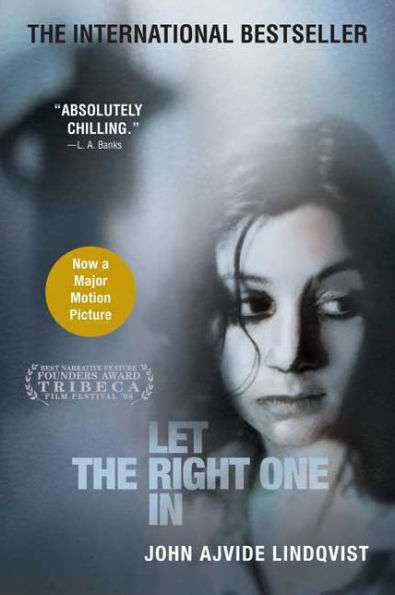

Let the Right One In
Wake of Vultures by Lila Bowen
From the suburbs of nineteen-eighties Sweden, we now come to the nineteenth century in America’s West. Nettie has spent her whole life working her adoptive family’s farm, being overworked and underappreciated. Half Indigenous and half Black, bisexual and gender non-conforming, she doesn’t feel like she belongs anywhere, except, perhaps, when she is working with horses. When a vampiric stranger invades the farm where Nettie works and she kills him, it sets her on a strange adventure through a world of mythical monsters and self-discovery in the Old West. This is an exciting and fun tale of monsters and adventure, and although Nettie is a very unique character with a lot of marginalized traits, she is always very well-drawn and relatable. I enjoyed this book for its representation of a non-monosexual hero who is well-rounded and not over-sexualized.
Buy the Book
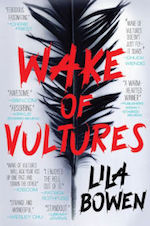

Wake of Vultures
Widdershins by Jordan L. Hawk
Every well-rounded top five list needs a good indie pick, and Widdershins is mine. Reclusive scholar Percival Whyborne is forced out of his routine as a museum translator when he is paired with Griffin Flaherty, a handsome ex-detective who is trying to unravel the mystery of a secret cypher. As Whyborne fights his growing feelings for Griffin, and the mystery surrounding the book of cyphers grows more deadly, he must face down the tragic and unrequited love in his past. This is one horror romance that handles death in a more progressive way but still manages to be scary. When his former love interest is brought back from the dead, Whyborne faces a symbolic choice between a life of unrequited affections and something real with Griffin. Overall, it is an addictive and readable book with a Lovecraftian flair. An honorable mention should also go to Restless Spirits by the same author, which also has lots of spooky tension and more of a haunted house vibe.
Buy the Book
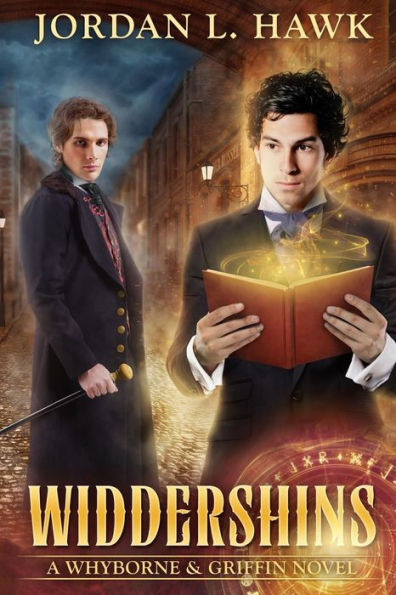

Widdershins
A Book of Tongues by Gemma Files
In an Old West where certain people can be transformed into barely-contained supernatural time bombs by abuse or trauma, Morrow, a private detective hired by a scientist, joins the gang of the unstable Asher Rook, a former Reverend who transformed into a hexslinger when he was hanged for being gay. The trio is rounded out by Chess Pargeter, Rook’s lover, a character who is charismatic, flawed and angry at life. When a bloodthirsty Mayan deity latches on to Rook based on an ancient prophecy, the trio embarks on a bloody and intense adventure that will change all of their lives. I enjoyed this book for its realistic depiction of the anger and resentment that can poison people when they are brutalized for being themselves. Rook and Chess feel so real given the setting, and yet paired the magic system and alternate history, the story has an entertaining and fast-paced feel. One small caveat: some readers may not care for the frank depictions of racism and other oppressions that were realities in the Old West.
Buy the Book
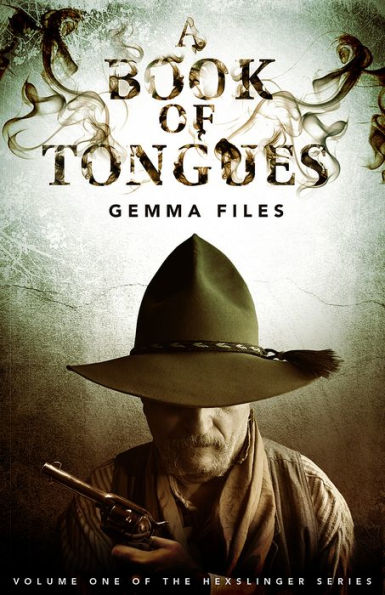

A Book of Tongues
Drawing Blood by Poppy Z. Brite
I saved my favourite for last. Drawing Blood is the oldest book on the list, and I hope that its age means that it’s almost eligible for the designation of ‘classic’. The story follows Trevor McGee, a talented artist whose family was killed by his famous but troubled father. When Trevor returns to the small town where the horrific event happened he is drawn down a dark path as he tries to figure out why his father did not kill him too. The mystery looms over his budding romance with Zach, a hacker on the run from the law. The story is rich and beguiling from the beginning, addressing generational trauma, attachment and healing, and the combined danger and beauty of imaginative work. I would advise any younger horror fans who were not reading during this time period, especially those who love the rich characterizations and slow-burn stories of Stephen King, to pick this one up. This quote from Drawing Blood sums up my feelings on the potential for horror to be a generative force for the LGBT community:
“You could kill someone because you loved them too much, he realized now, but that was nothing to do with art. The art was in learning to spend your life with someone, in having the courage to be creative with someone, to melt each other’s souls to molten temperatures and let them flow together into an alloy that could withstand the world.”
Buy the Book


Drawing Blood
That’s my list, friends! What about yours? Suggest your best picks in the comments.










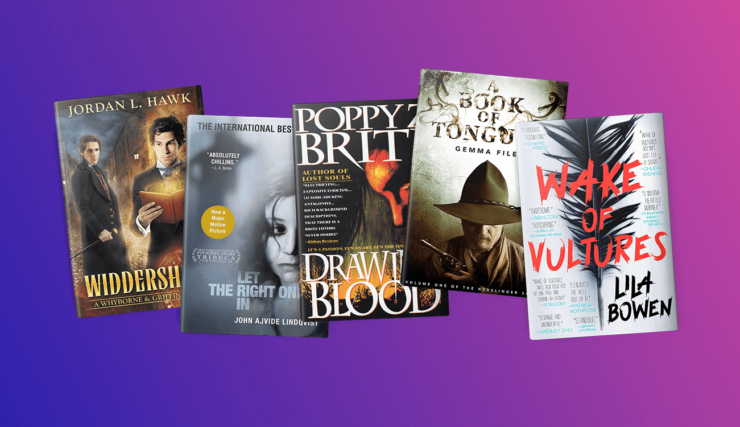
Thanks for the recs.
Went to Amazon: Widdershins, saw that it is currently only $0.99 on Kindle, insta-buy. I expect to buy the sequels at a more realistic, but still reasonable, price.
I’ve read both Widdershins and Wake of Vultures. Both good books but neither are what I’d consider horror. If those are horror, you’d have to consider Harry Potter and The Dresden Files horror too. Am I considering horror too narrowly? It is something I think about because in general, horror stories give me nightmares while regular fantasy doesn’t. Am I missing out on other good books that have been classified as horror but are more like Widdershins and Wake of Vultures?
@2 AprilDawn: Drawing Blood and Let the Right One In are both more traditional horror than Widdershins and Wake of Vultures, which I wouldn’t consider horror either. I’m always surprised when people put Widdershins on a horror list, because for me it’s fantasy. Not even dark fantasy, just regular paranormal fantasy. Maybe it’s because of the light Lovecraftian influences?
A Book of Tongues sounds intriguing, I’ll check that one out.
This sounds contradictory to me. How can you be bisexual when you don’t identify with a gender? Maybe it should be pansexual?
@@.-@ I mean, why couldn’t they be bisexual and non-binary, if they are attracted to men and women but don’t identify with either gender themselves? If that’s the way they choose to define themselves, why not?
@@.-@ It’s a matter of self-identification. Bisexual means attracted your own and other genders. Pansexual means attraction with regard to gender. The distinguishing factor is in the experience of a person so pan vs bi isn’t necessarily something that can be identified from the outside or by reference to hard and fast definitions.
@5 – You mistake me. I was wondering if someone non-binary could be, by definition, bisexual, which is a binary attraction. But looking at it now, I think I am mistakenly linking gender to sexuality. Though I think it would be odd if someone of non-binary gender wouldn’t be attracted to other non-binary gendered people. But I suppose it’s possible for a non-binary person to only be attracted to the male and female genders.
My suggestion is Caitlin R Kiernan’s Spyder. Great premise. There’s an enigmatic woman named Spyder and her crowd around her. You can not have arachnophobia to read this.
The premise and the recommendation sound great, but why is Dracula mentioned among homoerotic vampires? Carmilla, of course (and lushly so), but Dracula –at least Bram Stoker’s version– is definitely heteroerotic.
@9 Bram Stoker’s Dracula is widely regarded as homoerotic. Dracula wants to possess Jonathan Harker so much that he rebukes the female vampires who wish to have Harker. For his part, Harker is terrified of the women, which is seen as a metaphor for his fear of female sexuality. There’s also a lot of sexual tension built between Dracula and Harker, especially in reference to Harker’s blood and Dracula’s desire to taste it.
Stoker himself is believed, by most historians, to have been a repressed homosexual. He had a long-term friendship with Oscar Wilde, who he seems to have either secretly desired or had a secret relationship with.
Here’s one of many good resources to consult on this topic: https://thenewinquiry.com/coming-out-of-the-coffin/
I don’t know that Jasper Fforde’s Early Riser is exactly a horror story, though it has plenty of flesh-eating zombies, but it is well worth reading. The world building is damned clever and the writing is great. Fodder, while not the main character, is very memorable. Can’t explain why without spoiling a choice moment in the book. Just go read it.
@@@@@ 1o April A. Taylor: Thanks for the info.
However, despite being queerer than the proverbial three-dollar bill, I never found that kind of subtext in the book. (And mind you, I can almost recite it by memory.) In the movie, yes –plus young Keanu, of course; he was so yummy, one could easily forgive his hilariously bad RP. (I have never forgiven Winona hers.)
In the novel, there is a lot of erotism in the three vamp scene: they are gorgeous, they speak of “kisses,” and Jonathan is ready to succumb when Count D. saves the day –because he still needs him alive. (The movie scene is a LOT more explicit, and they do draw, uh, fluids from yummy Keanu.) In the end, he even abandons him untouched, as a gift to the Wives.
The whole Lucy Westenra subplot is brimming with erotism as well; so much so, that it has been argued that Dracula’s real threat is that he makes women aware of their sexuality. (That’s also played to the hilt in the movie.)
Stoker may have been a repressed homosexual, but that’s not necessarily reflected in the novel, as far as I can tell.
ETA: Oh, for chrissakes. I just realized that I have been speaking of the “Dracula movie” as if there has been only one. I guess the references to Winona and (yummy) Keanu make clear that I’m speaking about Coppola’s super campy film, not any of the (many, many) others, but I thought I should mention it.
@@@@@ 2 April Dawn: You’re right, it’s not really horror.
I had even forgotten that I had read Widdershins before. The adventures of Whyborne and Griffin read more like Kyle Murchison Booth* fan fiction, with a lot of sex and some Lovecraft thrown in for good measure. It’s… serviceable, but kinda too derivative, for my taste at least.
*Booth is the main character of a magnificent series of short stories by Sarah Monette. Most of them are collected in The Bone Key, but about three more have appeared since in anthologies and magazines, and I hope for more, as well as for some happiness for poor, tormented Booth. He is a lot less lucky in love and lust than Whyborne (that’s hardly a spoiler, by the way), and so he doesn’t quite fit the happier trope discussed in this column. He doesn’t get buried, true, but –poor soul!– he suffers. The Booth series is still magnificent, regardless, and worth reading.
Personally I found the novel Dracula eyebrow raisingly erotic and damn scary. It was so disturbing I couldn’t finish it.
I don’t generally read horror, and I’ve read and enjoyed Widdershins. The sequels do get more into the Lovecraftian.
Another good queer book on the fantasy/horror boundary is The Secret Casebook of Simon Feximal by KJ Charles. It’s really a collection of stories rather than a novel.
“A note to the Editor
Dear Henry,
I have been Simon Feximal’s companion, assistant and chronicler for twenty years now, and during that time my Casebooks of Feximal the Ghost-Hunter have spread the reputation of this most accomplished of ghost-hunters far and wide.
You have asked me often for the tale of our first meeting, and how my association with Feximal came about. I have always declined, because it is a story too private to be truthfully recounted, and a memory too precious to be falsified…”
@13 Booooth! From a certain point of view, his “best friend,” who’s name I can’t remember, got buried for not being gay. Booth might suffer but he always does better than the unfortunate opposite him.
But the fan fic line just moves Widdershins up in my TBR pile. Not everyone can match Monette’s prose but I’m totally here for not!Booth being a little bit happy.
@@@@@ 16: Blaine is the name of Booth’s “best friend.” I’m bad with names, but I’m currently on my umpteenth rereading of The Bone Key. I swear to God, I get “triggered” every time Booth’s name comes to mind, and once I open that book I have to read the whole thing.
I do agree that I’d love nothing more but for Booth to find some human comfort in his life. He does have at least a good friend in Miss Coburn, but he avoids her like he avoids everyone, which is unfortunate –for any person, their friends are their greatest treasure.
But gosh, Booth needs a lover. Perhaps a white-haired, heretofore unknown cousin who would be thus protected from the curse. (Though, if one reads carefully the titular story in the collection, there is a possibility that the curse has been lifted already, and by no other than Booth himself.)
@17 Unfortunately, I don’t have e-copy and I’ve misplaced my physical copies. A re-read sounds lovely.
What strikes me about Booth is that from inside his point of view, he’s very likeable but I’m not sure I’d get along with him without that viewpoint. He seems like a very difficult person even as he finds other people very difficult.
This is a great list and can’t wait to get my hands on these. I don’t read much horror, but that’s more to do with having a stupid big reading list already.
On the sad side, amazon UK don’t list Drawing Blood! It does list others of Brite’s works, but not that one.
@@@@@ 18: You have a pretty valid point.
However, some people are able to see beyond the facade. There is Miss Coburn, and Mr. Ratcliffe, and, of course, Doris and Carrie.
“Monosexual” is a terrible MOGAI word (but I repeat myself) that (1) implies gay men and lesbians share privilege with straight people over bisexuals; and (2) implicitly shames gay men and lesbians for being “bigoted” and “close-minded” by having gender/genital preferences. I think less of anyone who uses it unironically.
Must we further subdivide ourselves into microidentities that alienate us from each other even further and pit us against each other, at a time when unity is just not something to be desired, but that is desperately needed?
That, and Twitter –a tale told by an idiot, full of sound and fury, signifying nothing– are truly depressing the hell outta me.
Kyle Murchison Booth. Is he still alive? We know his papers are now a part of the collection of the Parrington Museum, but that does not necessarily mean that he is not still around somewhere. He would be in his 90s by now…
Eli is castrated AMAB in the Swedish film. Even if you couldn’t be bothered to watch it, a quick google would have found you the scene where they say to Oskar “I’m not a girl” and Oskar takes it in stride.
in general, fact check your work before you put it out there as gospel.